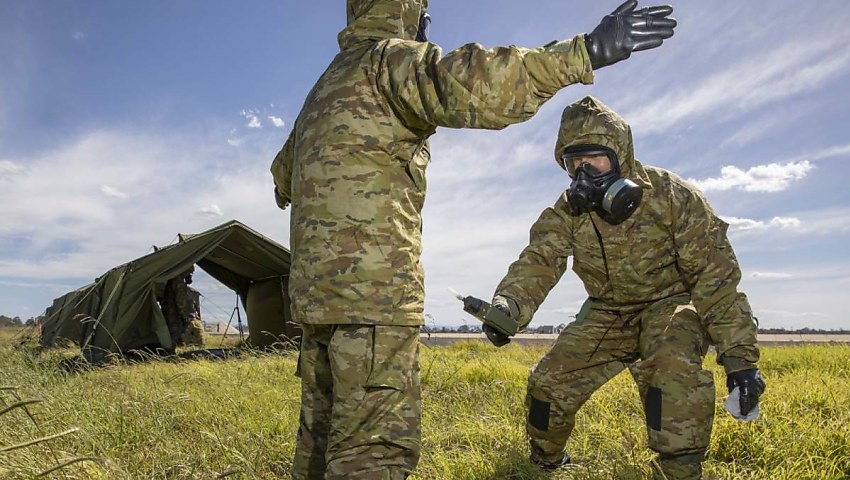Australian Defence Force personnel have readied their skills for chemical, biological, radiological, and nuclear defence operations during Exercise Toxic Gauntlet.
To continue reading the rest of this article, please log in.
Create free account to get unlimited news articles and more!
More than 320 Combat Support Group (CSG) and Air Mobility Group (AMG) personnel undertook the training to prepare for real-time environmental threats at Royal Australian Air Force Base Amberley in Queensland.
Exercise Toxic Gauntlet took place over two weeks with guidance from CBRND experts from the US Air Force, Pacific Air Forces Joint Base Pearl Harbor-Hickam, Army Headquarters, and Air Command.
Exercise Control and CBRND subject-matter expert Warrant Officer Anthony Hartley said the exercise equipped more than 320 aviators from CSG and AMG with essential skills.
“During the first week, over 280 CSG aviators received base-line training on the new CBRND equipment,” Warrant Officer Hartley said.
“In the second week, we had a team from CSG and AMG conduct a successful simulated aviation refuel of a C-17A Globemaster III in CBRND individual protection ensemble.”
The aviation refuel training introduced activities in a simulated contaminated environment, with trainers and mentors observing and providing feedback.
“In addition to the aviation refuel activity, another team from CSG conducted a successful familiarisation activity with new L2110-1B Collective Decontamination; medium equipment,” Warrant Officer Hartley said.
The familiarisation training involved establishing the decontamination capability which will assist in progressing the L2110-1B project timeline to final operating capability in the coming 12 months.
“To ensure that we can continue to project airpower in a CBRND threat environment, it is critical that we establish a robust CBRND capability,” Warrant Officer Hartley said.

 Login
Login







